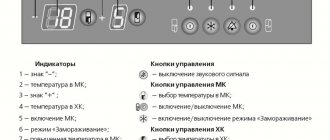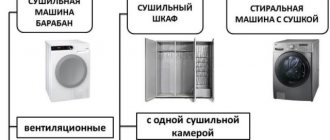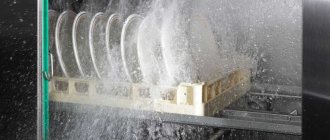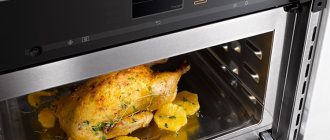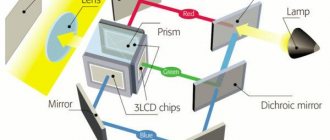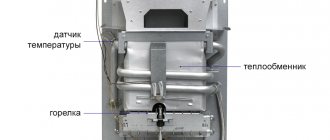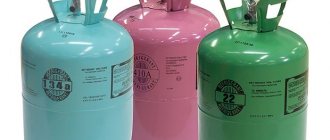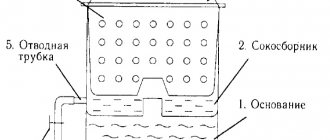When paying electricity bills, a person clearly sees how home appliances consume it. However, you can find out the approximate future costs of electricity before purchasing, for example, a refrigerator. And all because energy efficiency classes, which can be found on the packaging or on the unit itself, show the level of resources absorbed.
The gradation of consumer properties of a product consists of 10 steps and shows both the most economical options (from A to A+++) and the most costly (G). The article explains how to figure out how much home appliances consume.
Interesting to know: TOP 10 best air conditioners for home and office.
Energy consumption classes: what are they?
So, any electrical appliance has a colored sticker on its packaging informing about the degree of energy absorption by it. Such markings have been unified by the European Union and have the same meaning throughout the world.
It is worth considering each characteristic in more detail:
| Class | What does it mean | Electricity consumption based on the average energy consumption of the device (%) |
| A+++ A++ | The most economical energy consumption indicator | the highest level of energy conservation - 45% or more efficient |
| A+ | ||
| A | ||
| IN | Energy efficiency indicator is slightly lower than the previous class | the average energy efficiency index ranges from 55 to 75%; |
| WITH | Quite economical indicator | the index ranges from 75 to 95% of energy consumption |
| D | Average Energy Savings | the intermediate value measure ranges from 95 to 110% |
| E, F and G | Devices of the least economical type | are rare due to high energy consumption |
Energy saving classes such as E, F, G, due to wastefulness of electricity, are rarely found among the characteristics of modern devices. But class A has several improved subtypes: A+, A++, etc.: the more advantages, the greater the savings. When choosing a device with this marking, you will be able to save your family budget in the future.
How to determine the energy consumption class?
The problem is solved by relating actual and reference costs. Different models, having equal energy consumption, may belong to different energy consumption groups. It depends on how rationally they use water and how many revolutions they produce. That is why, when choosing an automatic washing machine (AWA), you need to look at all the characteristics in a comprehensive manner. Each device has a sticker informing the consumer about:
- energy efficiency;
- brand and model;
- annual energy consumption, kWh;
- annual water costs, l;
- spin and drying class A-G;
- maximum load, kg;
- noise, dB.
Today, the majority of SMAs offered on the market have energy consumption class A or B. If the equipment is marked with the letters F or G, it does not deserve attention - its quality can be characterized as bad and very bad, respectively. Devices with energy consumption classes D and E - normal and satisfactory - are rarely found on the market. Before assigning energy saving classes to SMA for each parameter - washing, spinning, energy efficiency - a comparison is made with the standard.
Washing machine energy consumption classes
How much electricity is consumed by the washing machine depends on the power of the device and the volume of the drum. For example, A++, like the Gorenje W 72Y2/R appliance, indicates a high degree of energy savings in the house. The more laundry you can put in a washing machine, the higher the energy cost. Modern devices take into account costs not only during operation, but also in standby mode and in the off state with the plug in the socket.
A sticker demonstrating energy consumption classes for washing machines carries the following information:
- Product brand and model;
- Energy efficiency class;
- Noise level;
- Drum volume;
- Average light consumption per year;
- Average volume of water per year.
Such recommendations help you choose the most profitable option in terms of price and efficiency.
Useful to know: Instructions for the washing machine: 7 secrets of effective use of equipment.
Energy efficiency and its classification
The energy efficiency of technical devices determines the rational use of energy. Therefore, when choosing this or that equipment, it is important to pay attention not only to the manufacturer’s brand, model and other characteristics, but also to the energy efficiency class to which it belongs.
The energy efficiency class is marked in Latin letters. As a rule, it is indicated on the device itself (with a sticker on the front) or in the passport. The first letter of the alphabet stands for high energy efficiency. Today the highest of the existing ones is A+++.
A ++ – ultra-high efficiency;
A + - more than high performance indicators;
A – highly efficient energy consumption;
How compassionate mothers harm their children without meaning to: quote from Agnia Barto
Scientists have discovered how exercise helps strengthen bones
We stick to the regime. How to help yourself avoid overeating from stress
B-electricity consumption is average;
C – low energy saving class, high energy consumption;
D – power consumption is spent inefficiently.
Initially, only letter designations from A to G were used. But as you know, technological progress does not stand still, and energy consumption is increasingly minimized, so letter designations in the form of E, F, G were eliminated as unnecessary, and “+” signs began to be added to the letter A " The more there are, the less energy the device consumes.
Freezer energy efficiency classes
The energy efficiency of a freezer is affected by:
- device power;
- device volume;
- functionality.
Devices like the Beko RFNK290E23S, equipped with a “No Frost” system, absorb more light than models with a drip defrost option, like the Electrolux EUT1106AW2. But “No Frost” units, in principle, do not require defrosting.
The consumption of energy resources increases in relation to the size of the freezing device.
When choosing a class A freezer, you should pay attention to the fact that it costs more, but is cheaper to operate. Class A is 50-80% more economical than other classes of the product considered.
Useful information: TOP 10 freezers of our time. Review.
How is the energy efficiency indicator calculated?
Energy efficiency is the rational use of electricity resources, consuming less energy with the same level of functionality of the device. This concept is at the intersection of engineering and economics.
Unlike energy saving, which aims to reduce energy consumption, energy efficiency is the useful use of electricity, in which the power and other functional qualities of the refrigerator do not suffer.
To calculate the energy efficiency indicator for refrigerators, the following parameters are taken into account:
- refrigeration and freezer capacity;
- minimum set temperature;
- equipment dimensions;
- average ambient temperature;
- compressor power;
- type of installed equipment;
- additional options: auto defrost, electronic display, etc.;
- the degree of congestion of the cells.
The highest energy consumption rating that can be assigned to a refrigerator is A+++, it is the least energy-consuming. Such models are more expensive than lower class ones. But as user experience shows, a more expensive refrigerator with a high performance quickly pays for itself.
For example, the Samsung RL44 QEUS, which has an “A+” indicator, with a volume of 326 liters, “eats” 315 kW/h per year. The Biryusa 22 refrigerator, with a “C” rating, volume of 250 liters, consumes 548 kW/h per year.
Attention! In order for the energy consumption class to correspond to that indicated on the label, the device must be installed correctly, strictly according to the instructions: aligned horizontally, with gaps between the equipment and the wall or furniture, at least a meter from the stove.
Information on the amount of energy consumed is indicated in the instructions. Based on the class data, you can independently calculate the approximate energy consumption for the year:
- class A – 125-300 kW/h;
- class B – 350-550 kW/h;
- classes C, D – 600-850 kW/h.
To calculate material costs, you need to multiply the class indicator indicated above by the tariff of a specific region. Example calculation for a refrigerator category A++ in Moscow: 135 kW/h × 5.38 rubles. = 726 rub. 30 kopecks in year.
How is the energy efficiency of a refrigerator calculated?
Refrigerators are assigned this category for a reason. To do this, a complex formula is used that takes into account the dimensions of the unit, the temperature range, the annual level of electricity consumption and many other parameters.
The energy efficiency class of a refrigerator directly depends on the Energy Efficiency Index (EEI). And the index itself depends on the annual electricity consumption of the device.
Index values are given in the table
Air conditioner energy consumption
Air conditioner manufacturers improve their products every year, making them more compact, reliable and energy efficient. Therefore, you can find the ideal equipment for the buyer if you know about the technical nuances of the products.
When choosing an economical device, you should pay attention to:
- established type of cooling (air, water);
- operating mode options;
- system (split and multisplit).
The profitability of purchasing the device and the level of electricity costs in the house depend on the proposed characteristics.
There is also an EER indicator, which demonstrates the efficiency of the device, taking into account the cooling power and electricity consumed. A high EER indicates good energy saving performance of the device.
In addition, since 2013, the European Union has introduced new energy efficiency standards for air conditioning - SEER and SCOP.
- SCOP (Season Coefficient of Performance) is an indicator for operating mode in cold weather, which is used to calculate energy costs aimed at heating the air.
- SEER (Season Energy Efficiency Ratio) is a parameter for calculating the amount of effort aimed at cooling a room during the warm period.
Based on them, you can compare the characteristics of devices based on seasonal weather changes.
Interesting to read: TOP 10 best Cooper&Hunter air conditioners.
Refrigerator energy consumption
The refrigerator is often the largest electrical appliance in the house. To purchase the most profitable device, you need to carefully approach the issue of energy saving of each of the candidates for purchase.
For example, seemingly almost identical A and A+++ will differ in energy consumption by 2 times. In conditions of long-term operation and the constant rise in utility prices, this is a significant factor for choosing a more modern refrigerator energy consumption class.
Interesting information: TOP 10 refrigerator manufacturers: we offer the best.
The need to know more about energy classes is increasing as energy prices rise. The ability to independently figure out which household appliances are useful in terms of savings, and which need to be reconsidered, also helps to influence this side of the family budget. In addition, the use of home appliances with a high energy saving class is a contribution to the ecology of the entire planet.
Understanding the energy efficiency classes of equipment
The issue of saving resources in the modern world is becoming increasingly relevant, since in the current economic and environmental situation it is important to treat all types of resources very carefully. Household appliances are also taking the path of saving, the economy of which is increasingly designated as an energy efficiency class. Such classes have been used for quite a long time in Western
countries, were also used in Russia on a voluntary basis, but in 2011 a list of household appliances that must be labeled with an energy efficiency class was established. Since 2011, this list has undergone some changes, and now it includes: refrigerators, freezers, washing machines, televisions, dishwashers, air conditioners, lamps, elevators and ovens. Other items may also have similar markings, but they are not required for now.
All this equipment is marked with letters from A to G, but not everyone knows what exactly distinguishes, for example, class A from C, except that A is probably somehow better than C. Therefore, labels and corresponding designations are sometimes difficult choice, and if equipment is purchased from foreign online stores, then you can also find A+, A++ and even A+++. What does this all mean? Let's try to figure it out.
Class A equipment is the most economical in terms of energy consumption, but it also costs the most. Each of the given letters corresponds to a specific color: for example, from A to G, the color scheme changes from bright green to red.
For each device, the indicators for assigning a specific class are different. So, for refrigerators , this indicator is calculated as the ratio of the energy consumption of the device per year to the standard consumption determined through research. So, if a refrigerator consumes 55% of the standard, then it is class A, up to 75% - class B, up to 95% - C, up to 100% - D, up to 125% - F, and if more - then G.
Refrigerator energy efficiency classes
For a washing machine, this figure is calculated by dividing the electricity consumption by the maximum load. So, if the result is a number below 0.17, then this is class A+, if 0.17-0.19 is class A, etc., but if this figure exceeds 0.39, then this is the least economical washing machine , the energy efficiency class of which is marked as G. By the way, on washing machines you can sometimes see not only one letter A, but also three - AAA: in this case, the first letter means energy efficiency, the second means washing efficiency, and the third means spin efficiency.
Energy efficiency classes of washing machines
Similar methods for calculating this indicator exist for each item of household appliance, and they all take into account the degree of energy consumption for a certain useful work.
However, for all household appliances there may be models marked A+ and A++ , which means that their energy efficiency is much higher than those devices that are designated as A. So, for refrigerators, for example, class A+ begins with the use of 42 % of standard, and A++ - 33%. Don’t be surprised to see an A+++ on the refrigerator, which means it consumes less than 22% of the standard energy. Domestic manufacturers sometimes use a class such as “super A” , but it should not be considered, most likely, as not reaching the A+ indicator.
If you are lucky enough to purchase appliances abroad, or order them from there, then you may encounter a slightly different classification system for household appliances. Thus, in the USA and Canada, along with a classification system using letters, the Energy Guide , which means that this device is included in 25% of those devices that are the most economical.
But no matter how good and economical devices with brand A are during operation, they are much more expensive than those labeled as B or C, etc. Therefore, the question becomes how to attract buyers to purchase just such equipment. the concept of the life cycle was introduced , which includes both the cost of purchase and the cost of electricity, which is used for 6 years. And then, if we compare an expensive, economical refrigerator, for example, with a fairly cheap but wasteful one, we can get waste values that will clearly be in favor of the first option.
the quality of operation is also interesting . Thus, there is a widespread misconception in our country that energy-saving equipment is not very efficient in the sense of its intended purpose: it is often thought that a class B washing machine will wash better than A. But everything is not so simple: it has already been said that washing machines , as well as dishwashers, have a three-letter marking, where only the first letter means their energy efficiency, and the other two – the quality of washing and spinning for washing machines and the quality of washing and drying for dishwashers. And in other situations, energy-efficient equipment, as a rule, is not inferior in power and quality to other models.
